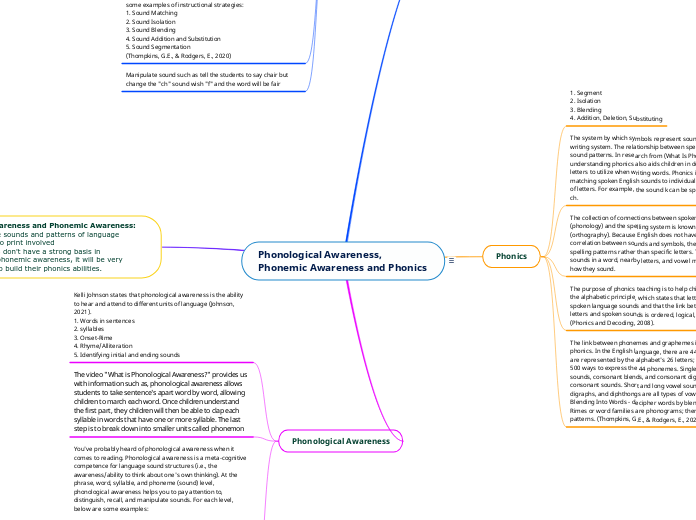por Shauna Thompson 3 anos atrás
373
Phonological Awareness, Phonemic Awareness and Phonics
Phonics is a crucial educational method that links phonemes, the distinct sounds in spoken language, to graphemes, the written symbols that represent them. English comprises 44 phonemes represented by 26 letters, with over 500 ways to express these sounds.









